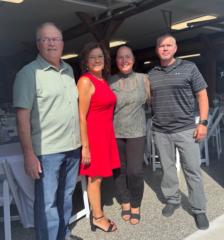6d • Article Series
The 30-Day Brain Upgrade (Part 3): Synthesis and Beyond
By the time you’ve completed the first three weeks, you’ll have built clarity, learned to see patterns, and trained your brain to become resilient under stress. The final phase of the program is about synthesis pulling all the pieces together, integrating what you’ve learned, and turning it into a living operating system for your mind. This is where scattered insights become a framework you can use long after the 30 days are done.
Week four introduces the lens of first principles thinking. This is the discipline of stripping assumptions down to their most basic truths and rebuilding from the ground up. Instead of accepting received wisdom or half-formed beliefs, you ask: “What do I know for certain?” and “If I rebuilt this idea from scratch, what would it look like?” This lens forces deep clarity and often uncovers surprising solutions.
The reading for this week comes from The Master and His Emissary by Iain McGilchrist. The book explores the divided modes of the brain the detail-focused left hemisphere and the context-seeking right hemisphere and how balancing them changes the way we perceive reality. The point isn’t to get lost in theory, but to see how attention, perspective, and context shape your daily decisions.
Memory practice in week four focuses on teaching back. The best way to prove you’ve learned something is to explain it to someone else or even to an imaginary student. Each day, take one idea from reading or journaling and explain it out loud in plain language. This cements knowledge and builds the skill of translation: turning complex ideas into simple, actionable language.
The prompts for this week invite integration. Ask yourself: “What’s one idea I can integrate across fields?” and “How can I reframe this problem as an opportunity?” The goal is to combine what you’ve learned into something practical bridging concepts from psychology, philosophy, and personal experience into one system.
Rest practices shift toward reflection. Long walks, sauna sessions, or quiet yoga give you space to process and connect dots. Unlike earlier weeks where rest included hormetic stressors, this week’s rest is about deep integration slowing down enough for the pieces to fit together.
On day twenty-seven, you schedule a four-hour deep work block. Pick a problem you’ve been postponing and give it your full attention without distractions. Apply everything you’ve learned: questioning assumptions, mapping systems, and recalling ideas from memory.
On day twenty-eight, you summarize the entire program into a one-page Brain OS. This document is your personal operating system for thinking: the key routines, prompts, and insights you want to carry forward. Keep it simple, clear, and actionable.
On day twenty-nine, revisit all your notes and highlight the ten most powerful insights. These are the lessons that had the biggest impact and are worth revisiting often.
On day thirty, you close the program by writing a two-page manifesto: “How I will think, learn, and rest moving forward.” This isn’t just a recap it’s a declaration of the mental operating system you’re choosing to run.
By the end of week four, you’ll have more than a notebook of scattered ideas. You’ll have a structure—a Brain OS—that can guide how you approach problems, learning, and growth. The real value of the 30-Day Brain Upgrade is not in the thirty days themselves but in the way it changes how you use your mind for the rest of your life.
The program closes with a modular toolkit you can cycle indefinitely. Thinking routines like the five whys, steel-manning, systems mapping, and first principles can be rotated weekly. Journaling prompts can be recycled or adapted to new situations. Reading can continue through psychology, complexity, resilience, and neuroscience. Memory techniques evolve with practice. Rest remains the foundation of recovery and integration.
The 30-Day Brain Upgrade is not a one-off challenge. It is a starting point for a lifelong practice of training the mind with the same care and intention we bring to training the body. With clarity, resilience, and integration, your brain becomes an antifragile system one that grows stronger, sharper, and more creative with every cycle of stress and recovery.
Daily Flow (30–60 minutes total)
• Thinking Routine (10–15 min)
• Prompt Journaling (10 min)
• Reading (15–20 min)
• Memory Practice (5–10 min)
• Rest Practice (10–15 min)
Week 4: Synthesis & Creativity
Day 22
• Thinking: Use first principles on a daily assumption.
• Prompt: “What’s one idea I can integrate across fields?”
• Reading: The Master and His Emissary (Intro + key ideas).
• Memory: Teach one concept aloud in simple terms.
• Rest: 15-min walk in nature or quiet space.
Day 23
• Thinking: Break a problem into raw truths (no assumptions).
• Prompt: “How can I reframe this challenge as an opportunity?”
• Reading: The Master and His Emissary (chapter on divided brain modes).
• Memory: Explain yesterday’s reading to an imaginary student.
• Rest: 10-min NSDR.
Day 24
• Thinking: Apply first principles to a health, work, or financial decision.
• Prompt: “If I had to rebuild this idea from scratch, what would it look like?”
• Reading: Continue The Master and His Emissary.
• Memory: Write 3 key takeaways without notes.
• Rest: Sauna, yoga, or 15-min body scan.
Day 25
• Thinking: Reduce a core belief to its base parts—then rebuild it.
• Prompt: “Which concept from earlier weeks connects here?”
• Reading: Continue The Master and His Emissary.
• Memory: Teach one concept to a friend or journal out loud.
• Rest: 20-min walk or light stretching.
Day 26
• Thinking: Take a problem you’ve postponed and break it to first principles.
• Prompt: “What’s the simplest possible solution?”
• Reading: Finish key sections of The Master and His Emissary.
• Memory: Review and explain the week’s main reading themes.
• Rest: 10-min breathwork.
Day 27 (Experiment)
• Four-hour deep work block.
• Focus on one postponed problem or project. Apply thinking routines and memory practices.
Day 28 (Integration)
• Write a 1-page “Brain OS” summarizing the month.
• Include routines, prompts, insights, and rest habits you want to continue.
Day 29
• Revisit all notes.
• Highlight your 10 most powerful insights from the 30 days.
Day 30
• Write a 2-page manifesto: “How I will think, learn, and rest moving forward.”
• Treat this as your declaration for using your new Brain OS.
8
2 comments

skool.com/castore-built-to-adapt-7414
Where science meets results. Learn peptides, training, recovery & more. No ego, no fluff—just smarter bodies, better minds, built to adapt.
Powered by





